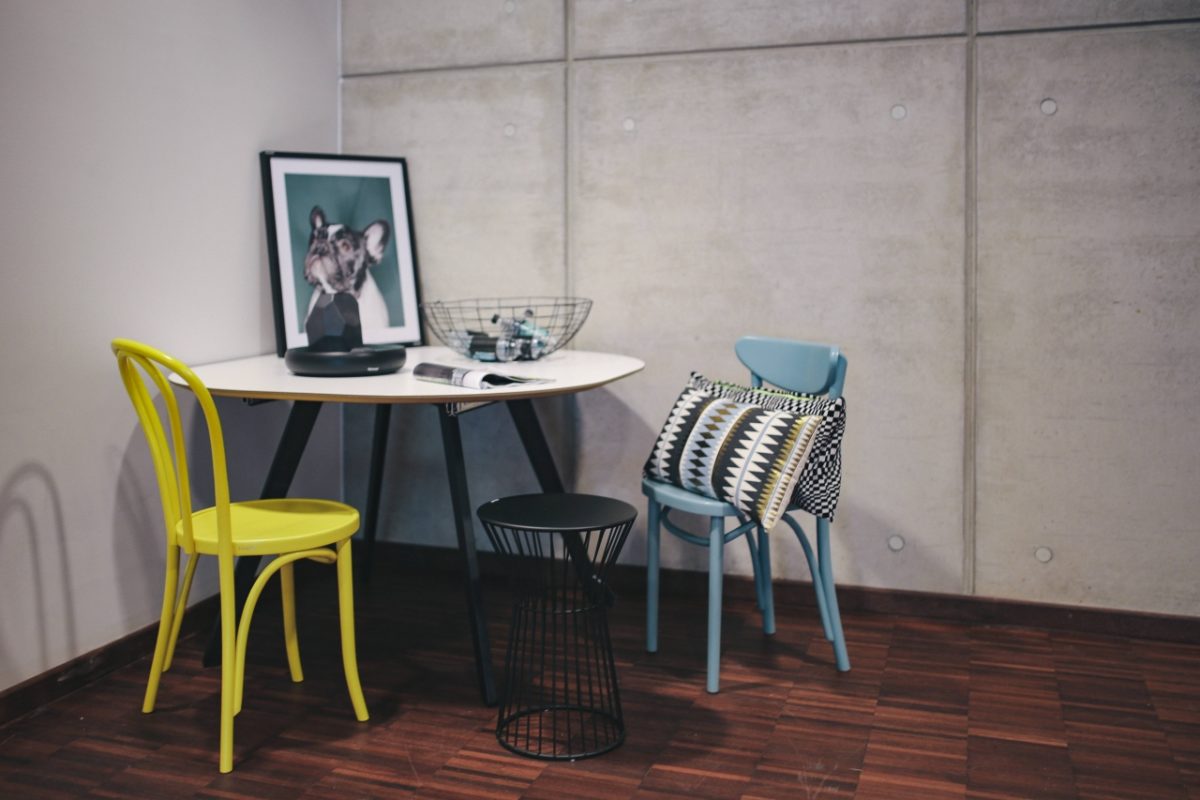From cafes to hot desks, remote workers have lots of choice when it comes to where to do their work. However, many people still crave the structure and stability of an office, where they can both collaborate with peers and be able to concentrate behind closed doors.
So how can coworking spaces, office buildings and architects support this delicate balance of needs? These tips and ideas will help you curate a productivity-boosting physical office that caters to the digital workforce.Assessing the Physical Environment
In a world that demands our constant use of screens and technology, having comfortable chairs and desks is key to employee success. Uncomfortable office chairs can cause headaches, neck and back pain and poor posture, Emma Hickey at Poros Consulting writes. It can also lead to unhappiness and overall dissatisfaction with the workplace. In a recent Kelton Global Study of working American adults, 54 percent of respondents said that an uncomfortable chair or workspace would cause unhappiness at work. Seats aren’t the only thing about a physical workplace rendering employees unhappy. In the same study, 70 percent of women and 55 percent of men said that having a cluttered work area would make them unhappy. “Many of us who work full-time spend the majority of our day at our desk or work station, so it’s not surprising that layout and design has a major effect on our mood,” Dean Stier at National Business Furniture explains. Such in-office detriments seem to have an easy answer: remote work. Yet, remote work is unable to provide the fruitful face-to-face interactions that are created in a physical workspace, Aviviere Telang at Hewlett Packard explains. Work that requires complex thought and collaboration is much better performed in-person, and this is where fully remote teams sometimes struggle. So how can the digital workspace — the technologies and tools that enable collaboration online — work in harmony with the physical workspace? It all starts with understanding how digital workplaces are leveraged within the physical office. Gathering data on popular employee meeting points, Heather Bicknell at Lakeside Software writes, can inform how the physical environment is helping or hindering employees’ digital initiatives. Analyzing the digital and physical workspaces can help organizations evaluate and reallocate amenities to ensure maximum environmental efficiency.Spaces That Nurture Collaboration
The physical design of a workspace can help or hinder certain organizational behaviors. This is why the office space should reflect the type of growth that a company wants to achieve. If leaders fail to consider their long-term values when designing a physical workspace, the employees might struggle to succeed in the ways they’re expected to. Working in small groups can help boost transparency throughout an organization, leadership and management coach Pilar Orti writes. To boost collaboration, it can help to have employees share details about their work processes and decision-making. The location and availability of collaborative rooms also influences certain sharing and collaborating behaviors. Modern offices tend to have multiple spaces that invite social interaction, including common areas, coffee rooms and kitchens, Karla Pope at commercial real estate magazine Blueprint explains.
But what about other spaces, like the restroom?
“Going to the restroom is, like eating food, a necessary element of everyone’s life and work dynamic,” sociospatial analyst Jonah Bleckner says. If people have to walk through different departments to use the restroom, for example, this can facilitate visual, verbal and nonverbal social interactions that may not have occurred otherwise.
Wayfinding is another aspect of navigation in the physical office environment that can help or hinder employee success, David Spence at OfficeSpace Software writes. Wayfinding is about reducing confusion and ensuring seamless, effortless guidance for people needing to move around the office.
A well-designed office reduces decision fatigue and can boost the employee onboarding process, by helping new employees find their way quickly. This creates a smoother transition during their first few weeks.
Office designers and company leaders must also consider the design and arrangement of furniture. Office environments with rounded edges and curves are linked to positivity, cognitive neuroscientist and author of “Personology,” Christian Jarrett adds. In particular, rounded furniture placed in a circle promotes collaboration much better than sharp, straight-edged furniture with sharp lines.
The addition of optional standing desks can greatly improve the physical environment as well. Specifically, standing desks can fight the afternoon slump and keep employees energized, Enerspace Coworking founder Jamie Russo writes.
For people who get distracted easily in open office environments, there are a number of ways to provide options for privacy. Moveable walls, panels, green walls and bookshelves all combat visual distractions, Rachel Morrison, senior research lecturer at the Auckland University of Technology, writes. The option to create private and semi-private spaces on demand is what creates dynamic, flexible workspaces that cater to the needs of every worker.
The location and availability of collaborative rooms also influences certain sharing and collaborating behaviors. Modern offices tend to have multiple spaces that invite social interaction, including common areas, coffee rooms and kitchens, Karla Pope at commercial real estate magazine Blueprint explains.
But what about other spaces, like the restroom?
“Going to the restroom is, like eating food, a necessary element of everyone’s life and work dynamic,” sociospatial analyst Jonah Bleckner says. If people have to walk through different departments to use the restroom, for example, this can facilitate visual, verbal and nonverbal social interactions that may not have occurred otherwise.
Wayfinding is another aspect of navigation in the physical office environment that can help or hinder employee success, David Spence at OfficeSpace Software writes. Wayfinding is about reducing confusion and ensuring seamless, effortless guidance for people needing to move around the office.
A well-designed office reduces decision fatigue and can boost the employee onboarding process, by helping new employees find their way quickly. This creates a smoother transition during their first few weeks.
Office designers and company leaders must also consider the design and arrangement of furniture. Office environments with rounded edges and curves are linked to positivity, cognitive neuroscientist and author of “Personology,” Christian Jarrett adds. In particular, rounded furniture placed in a circle promotes collaboration much better than sharp, straight-edged furniture with sharp lines.
The addition of optional standing desks can greatly improve the physical environment as well. Specifically, standing desks can fight the afternoon slump and keep employees energized, Enerspace Coworking founder Jamie Russo writes.
For people who get distracted easily in open office environments, there are a number of ways to provide options for privacy. Moveable walls, panels, green walls and bookshelves all combat visual distractions, Rachel Morrison, senior research lecturer at the Auckland University of Technology, writes. The option to create private and semi-private spaces on demand is what creates dynamic, flexible workspaces that cater to the needs of every worker.

